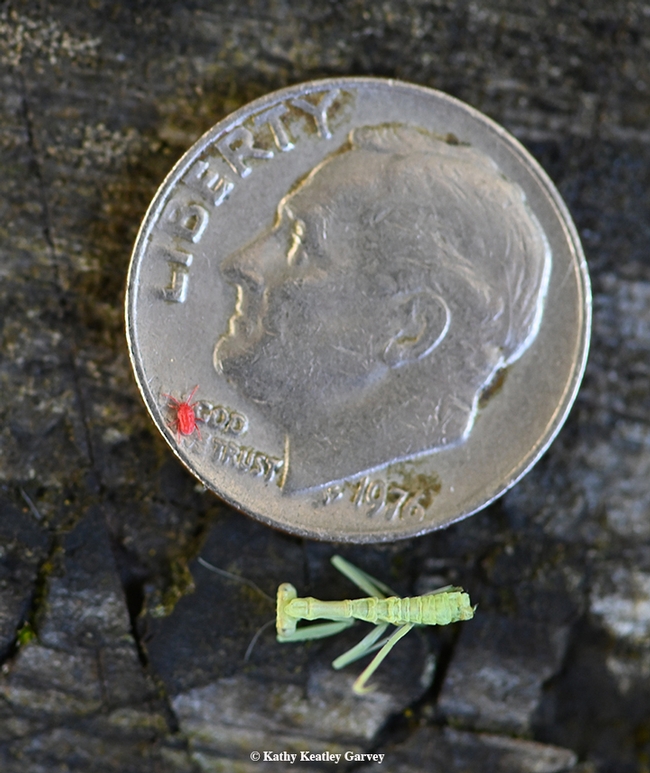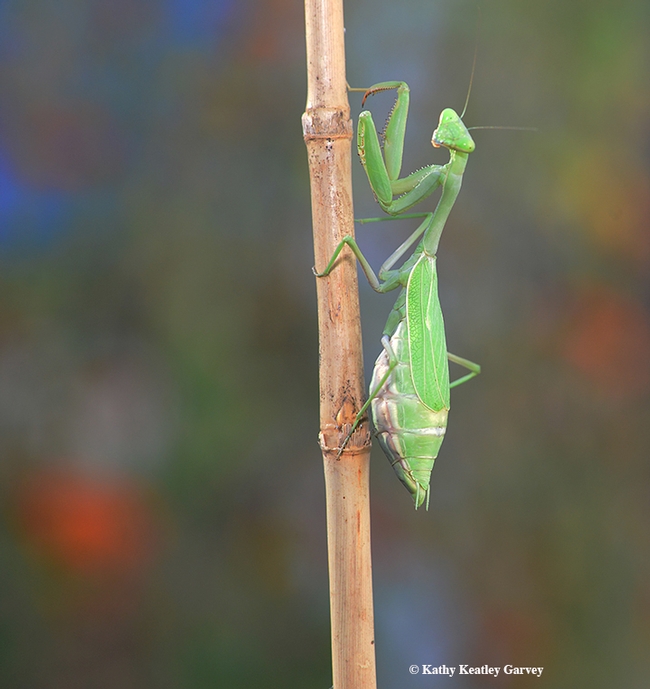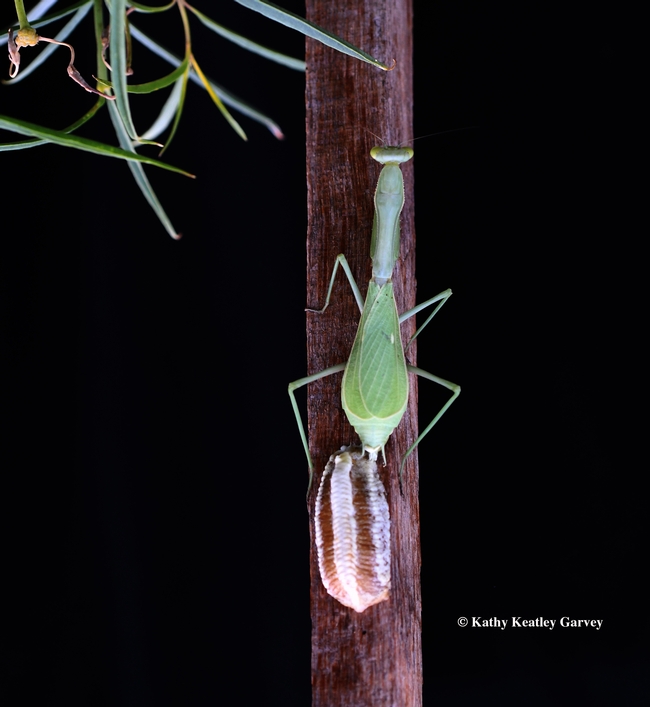We rarely see an adult praying mantis until late summer or fall.
Their offspring are out there, though.
And sometimes we see life go full circle.
On Sept. 23, 2018, we watched a Mama Stagmomantis limbata, as identified by UC Davis entomology student and mantis expert Lohit Garikipati, a Bohart Museum of Entomology associate who rears mantids) grace our planter with an ootheca in Vacaville, Calif.
As we mentioned in a previous Bug Squad blog:
"She climbed a redwood stake, looked around, saw me (oh, no problem, you're not a predator!), and crawled over to the other side. She positioned herself upside down, bulging abdomen intact, and proceeded to do her business. A frothy cream-colored substance began to emerge. (See my short YouTube video.) When darkness fell, she was still there."
"When Monday dawned, she was still there, her ootheca finished and hardening. It probably contains several hundred eggs, but who's counting? However, scientists estimate that only one fifth will survive to adulthood. Many of the nymphs will be eaten by their hungry brothers and sisters. Bon appétit!"
Fast forward to May 13, 2019. We spotted an offspring cradled in a leaf a few inches from the ootheca. "First-instar, Stagmomantis limbata," Garikipati said. "Must be an ooth nearby."
And then on May 19 our "star"--or maybe one of its siblings--came up missing a chunk of its abdomen. Sibling cannibalism?
No "sisterly or brotherly love," to be sure.
Attached Images:

First-instar praying mantis, Stagmomantis limbata, as identified by UC Davis praying mantis expert and entomology student Lohit Garikpati. Photograph taken May 13 in Vacaville, Calif. (Photo by Kathy Keatley Garvey)

How tiny is the first-instar? This tiny. And that's a red spider mite that crawled onto the dime. Note the chunk of abdomen missing on the first-instar--probably due to sibling cannibalism. (Photo by Kathy Keatley Garvey)

This was a very gravid mantis, Stagmomantis limbata on Sept. 24, 2018. (Photo by Kathy Keatley Garvey)

Mama mantis, a Stagmomantis limbata, depositing an ootheca or egg case on a redwood stake. (Photo by Kathy Keatley Garvey)